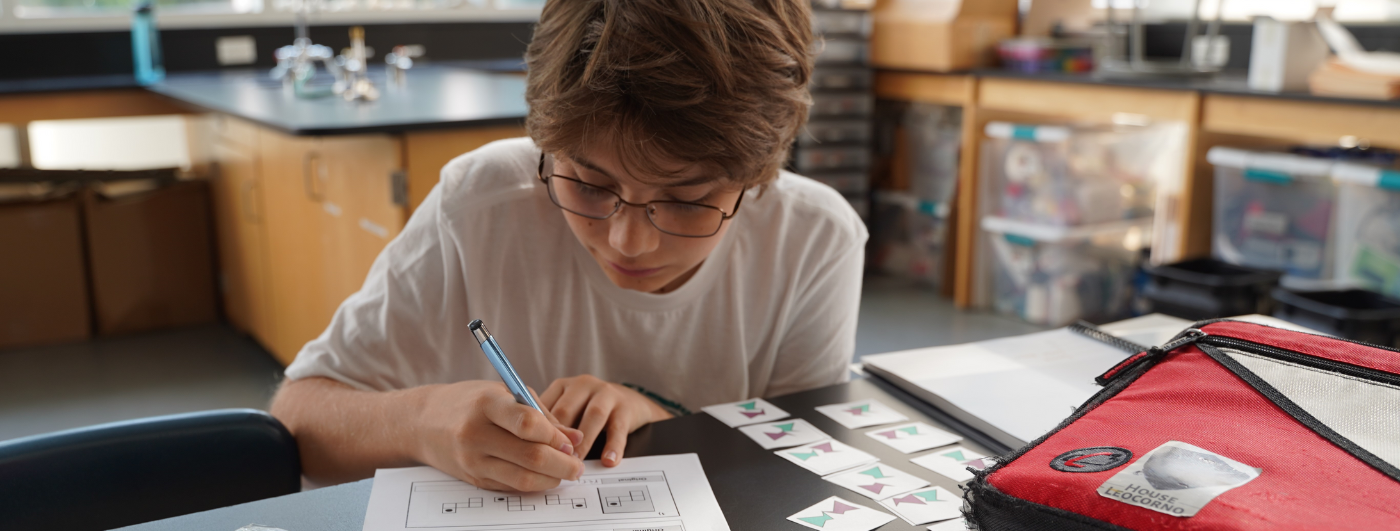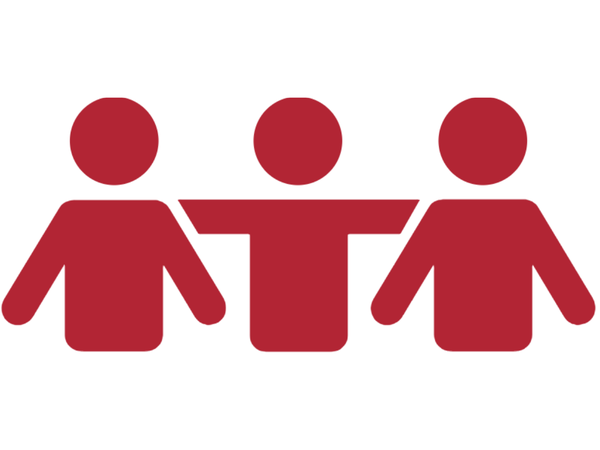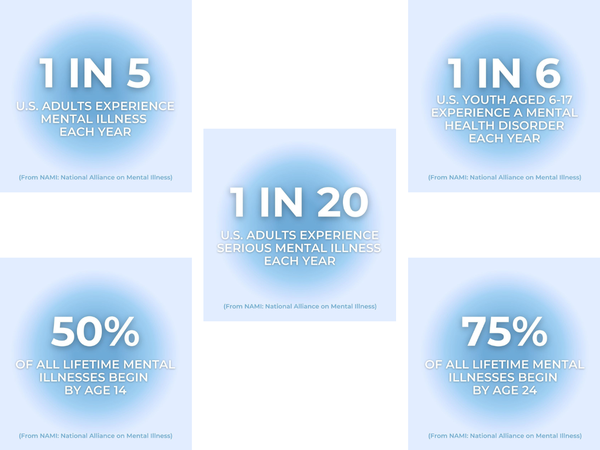Empowering students with language-based learning differences

Siena Blog



The Siena School Blog
Discover, Learn, Celebrate, and Empower
Welcome to Siena's blog, your source for helpful, cutting-edge resources tailored to teachers, parents, and other advocates in the learning differences community. We are dedicated to providing a wealth of curated knowledge spanning various topics, ranging from dyslexia advocacy and awareness to classroom teaching strategies, heritage month profiles, and social and emotional health.
Discover innovative classroom strategies that inspire creativity and foster a love of learning.
Our commitment to social-emotional wellness ensures that we provide valuable insights into healthy student development and self-advocacy.
Discover resources, reading and podcast recommendations, volunteering opportunities, and more for parents in the LD community.
Our important heritage month posts highlight key people, offer reading and podcast recommendations, and more.
Calming Strategies in the Classroom

Avg. read time 5-6 min.
Imagine your student is in the classroom learning a new lesson and begins to feel anxious. They don’t want to miss the lesson or lose learning time, but they also want to avoid feeling the big feelings!
The Take a Break Space: Calming Strategies in the Classroom folder that The Siena School uses is specifically designed to help students take a few minutes to (re)focus their attention on a multisensory coping strategy to reset and reengage in the lesson. It collects intentional calming tools and strategies that are helpful for all Siena students to go from “Fight, Flight, and Freeze” to “Rest and Digest.”
Also, it promotes relaxation and better focus by shifting attention from dysregulation to mindful soothing stimuli, creating a safe space for self-regulation.
Classroom Calming Strategies for Teachers
It’s very important to give students ready access to calming images and other strategies during the school day. Among other social-emotional benefits, this makes taking care of their mental health a multisensory experience for them, as well as complements their academic development.
Sensory-focused activities remind our students to pay attention to the physical sensations accompanying their emotions. This expands the social-emotional experience and understanding for our students, reminding them that their emotions have a purpose and encouraging reflection on why that feeling happened. When they understand the why, they can then have greater awareness of what they need and ask for it.
Siena teachers are encouraged to remind students to utilize the Take a Break folder and actively send the student to the calming space for a reset. This allows for the student to feel empowered to take the break they need, as well as have agency over the strategy they choose to reset. The anchoring message here is “It’s okay to take a break” for students and teachers alike.

Calming Tools for Classroom Use
Siena teachers on all three campuses have access to our Take a Break folders, and the counseling team will be visiting homerooms for all grades. These folders are full of print graphics, short affirmative meditations, and more, such as:
- Coloring pages — Coloring (or drawing) can greatly help students focus their energy in the moment to help them regulate, particularly when it’s a more detailed design that requires slow and careful movements and focus. See Creative Color Lab for examples that we’ve used at Siena.
- Tactile stickers — Students can add sensory strip stickers to their water bottles, computers or anything else they carry for easy, portable access to calming exercises (such as Star Breathing).
- Positive affirmations — Students can use these short phrases (such as “I am here. I am safe” and “I deserve to be seen”) to ground themselves in moments of dysregulation or self-doubt.
- Spot It/Name It Graphics — Using A Little Spot of Feelings and Emotions (from artist Diane Alber) helps students to “spot” their emotions and clues to better understanding what they are feeling and why. Students in Social and Emotional Learning classes are practicing writing and communicating “I” statements with blanks for them to specify their feelings — such as, “I feel confused when I’m in math class because I don’t understand yet. I need to ask for help.”
- Movement exercises — This helps our students to take an in-class movement break discreetly. The goal is to provide an opportunity to practice movement without disruption. One way we do this is by encouraging them to move to the back of the room and do quiet body stretches; those who want to stay seated can do chair yoga to get those wiggles out.
See these Calming Posters for Your Break Space from Teachers Pay Teachers for additional visual resources for use in classrooms and counseling offices.
How Parents Can Support Students at Home
We all need to take a break throughout the day. Whether it's for 5 minutes to step away and shift your surroundings or to take your full lunch break, we should be telling ourselves “It’s okay to take a break” and mentally reset for whatever task is in front of us.
Parents can talk to their children about strategies that help them to feel focused, confident, and capable in the classroom. Make a list and practice role-play exercises of the “I” statement so they feel assured in communicating their emotions and what they need for success. When they do share a difficult moment in their day, validate their feelings and help them reflect on what they can learn from their experience or what they can do differently next time to feel better.
Resources from Siena’s Blog
Siena’s individualized approach creates a safe, responsive, and nurturing environment that supports our students’ academic and emotional well-being. Our teachers and staff also encourage students to use quiet, focusing fidgets in the classroom to regulate their emotions and ease stress. See this blog post about the benefits of fidgets for Siena students. For more on the value of fidgets for neurodiverse students read The Science Behind Fidget Toys.
See other posts of interest in our Social and Emotional Health blog category, such as these about learning differences and confidence and online and offline boundaries for teens.
The Siena School, a national leader in dyslexia education, serves bright, college-bound students with dyslexia and other language-based learning differences on DC Metro area campuses in Silver Spring, MD (grades 3-4 and 5-12) and Oakton, VA (grades 3-12).
Boundaries: At Home, At School, Online

Avg. read time: 3 min.
Mental Health Awareness Month 2023
With Mental Health Awareness Month 2023 winding down, it’s a good time to look ahead to summer and think about how adolescents can continue their good mindfulness and self-care practices over break.
Mental Health and Boundaries
Understanding in-person and online boundaries is important all year, and having unstructured time over summer break might test such boundaries. In our work at Siena this year, we’ve noticed a pattern in the support students have been seeking: how to assert their boundaries firmly but respectfully in their daily interactions.
Part of social–emotional learning involves growing self-awareness, identifying values, and setting boundaries. Here are some ways for adolescents and teenagers to do this:
- Be clear: State your boundaries clearly and succinctly and lead with “I feel” statements, such as “I feel frustrated when you do ____” or “I feel hurt when you do ___.”
- Be firm but kind: When you state a boundary, do so respectfully and at a normal speaking volume. If you have to remind someone of a boundary, continue to be respectful.
- Focus on you: Boundaries are about how you would like to be treated and what you will do if you are not treated that way. Boundaries do not give you control over other people’s behaviors.
- Seek support from an adult: If you are clearly and respectfully stating your boundaries and your boundaries are still being violated, talk to a trusted adult for support.
Parents can help their students practice healthy boundary setting at home. If your child struggles with this, work with them to pick a boundary and practice enforcing it within your family. In addition, model healthy boundary setting for your children.
How Parents Can Help Teens with Online Boundaries
Students—particularly middle schoolers who might have their first cell phone—sometimes need help understanding responsible technology use. Students at this age may not be developmentally ready for the stress that comes from navigating daily digital communications.
Here are a few suggestions to guide your student with social interactions using technology:
- Monitor their communication: Let them know that you will periodically review not only the communication they send out but also what is sent to them.
- Set aside time to review texts: Due to the nature of texting and online communication, students are often forging ahead with minimal guidelines. When you talk through text conversations, explore how certain language can be misunderstood and cause hurt feelings. Parents could then brainstorm ways to communicate more successfully.
- Initiate parent-to-parent communication: If you see a text message that you think another parent should know about, please arrange a time to speak with them. Children are going to make mistakes, and families are encouraged to support each other as we all navigate the complicated world of digital communication.
- Encourage a variety of in-person, real-life relationships: Learning how to negotiate with others face-to-face and resolve differences are among the many interpersonal skills necessary in adult life. When students develop these face-to-face skills, they can adapt these to online skills more easily.
Here are additional suggestions that came from students and adults we’ve talked to this year:
- Encourage downtime from tech: Students often receive tons of messages and phone calls, including in the middle of the night. An easy way to give students a mental break and avoid such disturbances is putting the phone in a different room or powering it down.
- Turn off read receipts: This notifies the sender that the receiver has read the text message and can cause conflict if the receiver does not answer right away and feels slighted or ignored.
- Monitor cell phone usage: This is extremely important for helping our students navigate their online lives. If you see your child is sending multiple text messages in a row or calling someone multiple times, please discuss boundaries. Have them send one message, make one phone call, and then stop.
- Utilize tech apps: Whether it is on your child's phone, laptop, or video game console, using tech apps to control the amount of time they spend logged on is super helpful. Popular social media platforms like Instagram and TikTok also have useful tools for parental controls. You can “set it and forget it” and don't have to constantly monitor usage.
Additional Resources for Mental Health Boundaries
Parents interested in learning more about online boundaries for adolescents and teenagers can look up Delaney Ruston’s film Screenagers: Growing Up in the Digital Age, as well as Devorah Heitner’s Raising Digital Natives. Heitner is also slated to publish a new book in September 2023, Growing Up in Public.
For additional information from The Siena School blog to help navigate students’ social–emotional health, see Haley’s posts about learning differences and confidence from May 2023 and about social media and mental health from May 2022.
Siena’s mission-focused innovative dyslexia education is designed for students in grades 3-12 with language-based learning differences on campuses in Silver Spring, Maryland, and Oakton, Virginia.
Learning Differences and Student Confidence

Avg. read time: 3 min.
Mental Health Awareness Month 2023
The theme for Mental Health Awareness Month 2023 is More Than Enough. As the National Alliance on Mental Illness (NAMI) reminds us,
It’s an opportunity for all of us to come together and remember the inherent value we each hold—no matter our diagnosis, appearance, socioeconomic status, background or ability.
Regardless of whether the school year is winding down or ramping up, families in the LD community can always benefit from up-to-date resources for understanding the social–emotional side of learning differences.
Recent Articles on Learning Differences and Self-Confidence
Here are some salient ideas that I’d like to highlight from these Child Mind Institute articles to help parents and students understand the importance of mental health in the LD community:
How To Help Kids Deal With Embarrassment
- Model how to deal with embarrassment—acknowledge it, remain calm, even identify the embarrassment or say it was also funny.
- Do not avoid embarrassing situations; rather, first work through them and then validate and praise children for their resilience.
- Key quote: “Helping your child gain perspective without minimizing their feelings will make it easier for them to move past negative experiences—and give them an important tool for building self-awareness in the future.”
How To Help Kids Talk About Learning Differences
- Help LD students understand their specific learning difference and discuss how it impacts them.
- Encourage students to practice advocating for what they need or what strategies help them inside and outside the classroom.
- Key quote: “If your child has habits or strategies that help them manage their learning difference, encourage them to let the teacher know.”
Social Challenges of Kids With Learning Differences
- Understand that a non-verbal learning difference could mean challenges with social cues, rules, and understanding jokes.
- Acknowledge that (1) children with ADHD might have trouble organizing an answer, show impulse control issues for sharing, or have trouble listening and (2) children with dyslexia might have trouble with complex language.
- Key quote: “If they’re getting the right support for their learning challenges, they will feel more confident.”
How To Help Kids With LD Build Confidence
- Practice reframing negative thoughts into positive ones.
- Instill a sense of belonging and encourage them to engage in outside activities/interests to help boost their confidence.
- Key quote: “Help your child develop a sense of belonging by helping them make meaningful contributions to family life, friends and community.”
Online Resources for Mental Health Awareness
In addition to the above pieces from Child Mind Institute, here are some other resources to help adolescents, teenagers, and parents get the support they need:
- Brilliant Mindfulness
- Meditation Resources and Guided Meditation Apps
- Mental Health America
- Mental Health Awareness Month (NAMI)
- Mindfulness + Meditation Resources (Stanford Health Library)
- Mindfulness Resources (Calm)
Additional Resources
See also Siena’s Resources webpage for ample links to material on ADHD, dyslexia, parenting, getting support for learning differences, and more. The Siena School blog has recent posts about social media and mental health and lessons in dyslexia advocacy, among many other relevant topics.
The Siena School, a national leader in dyslexia education, serves bright, college-bound students with language-based learning differences on campuses in Silver Spring, MD (grades 3-12) and Oakton, VA (grades 3-11).
Preparing For Your School Visit

“At first I was sad about leaving my old school, but I felt happy and excited later when I met new friends. It was also good to meet my new teachers and get to know them better.”
—Siena Elementary Student
Visiting a potential new school is an important step in deciding on the right school. It’s the first in-person, real-time encounter with a school’s students, faculty, staff, and leadership.
Preparing to see a new school is important and entails addressing material and emotional needs. Here are 3 keys for parents to assist in a successful school visit for their child:
1. Be prepared and ask questions.
A successful school visit requires pre-planning. Think about all the things your students need during a regular school day, such as:
- A bag or backpack
- Classroom supplies
- Lunch and snack foods
- A refillable water bottle
- Extra clothes for outdoor recess and/or P.E.
Depending on the school being visited, students might need some or all of the above materials. Having the necessary materials can help a visitor both be prepared for the day and—particularly for an anxious child—feel a sense of comfort and familiarity in a new environment. Parents could help build more excitement for the visit by having their child pick a favorite outfit, folder, pen/pencil, or snack to get ready for the day.
When preparing for your child’s school visit, parents could ask their admissions point of contact questions like these:
- What do I need to know about dropoff and pickup procedures? Can my child carpool with a current student?
- What emergency contact information should I provide?
- How will I find out about weather-related decisions that could delay the start of the school day?
- What do I need to do if my child has a food or other allergy? What if my child takes medication during the school day?
- What (if any) technology does my child need to bring—or not bring?
- Can my child bring a fidget or similar comfort object?
- Is there a dress code?
- What protocols are in place for COVID screening and in-school safety?
Knowing the answers to these questions gets the visit off to a strong start and helps show parents how well the school communicates with families.
“When my mom dropped me off, I was nervous. But then I made friends at lunch and felt more comfortable.” —Siena Elementary Student
2. Be aware of social and emotional needs.
After knowing what to bring and what to do for the school visit, parents should remember how important social and emotional wellness is for their child. Parental support is key to the school visit. Start by recognizing that it’s very common and understandable to be nervous about visiting a new school—similar to how adults could be nervous about the unknowns of starting a new job.
If possible, parents should request a schedule for how their child’s day will be structured, and then review it with their child in advance of the visit. This can provide some predictability for classes and breaks, as well as generate excitement for any activities or clubs in the visitor’s day. Knowing something as simple as what time they’ll eat lunch or where they’ll put their things can help a child feel a sense of control.
It might help assuage some anxieties by working with the school’s admissions office to arrange a short pre-visit to see the school building at off-peak times. Even a short walk around the school building and grounds with a staff member beforehand can help ease a student into their visit.
3. Be curious and open-minded.
Just like a new neighborhood or new social activity, a new school has a lot to offer for students. Being open to diverse experiences and opportunities—such as different teaching styles or extracurricular offerings—can help a child see if the school is a good fit for them.
An openness to possibility and newness is important for student visitors at all grade levels (but especially high schoolers). Being flexible and welcoming of change helps visitors learn about a school. The older a student is, the more likely they are to have preconceived notions or rigid expectations about what they want from a school. Parents might need to remind students that each school has its own way of doing things, so an open-minded approach can help students genuinely learn what the school can offer them.
Here are some questions students can ask when visiting a potential new school:
- What kinds of homework and class projects will I do?
- Can I meet with my teachers outside class to discuss my work?
- What are the major all-school events that happen?
- What extracurricular clubs, activities, groups and/or sports teams can I join?
“I was happy to be visiting a new school because there were a lot of kids like me. I didn’t feel left out.” —Siena Elementary Student
When parents prepare for a school visit by asking relevant questions and knowing what to bring, they can ensure that their child gets the most out of the experience. Having the materials, support, and mindset they need will maximize the opportunity for students to both learn about the school and help the school learn about them.
See The Siena School blog for more relevant information about student life, such as about how students learn to self-advocate and how parents and students can connect with their new school communities.
